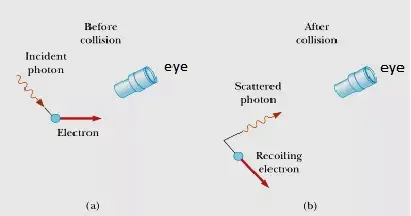

In other words, the electron is observed as either a particle or a wave, but never both at the same time.

In trying to observe the particle-nature of the electron, its wave nature is lost. Moreover, the interference pattern is no longer observed instead, two bright lines are seen. When an electron travels through a slit, it produces a small flash - indicating the slit it just passed through.ĭuring the experiment, flashes are observed at only one of the slits at a time, but never both slits simultaneously. To study this, a laser beam is arranged directly behind the slits. Since an electron is a particle, it should be possible to monitor which slit or slits it travels through. When electrons pass through one by one, the same pattern is observed. When a beam of electrons passes through the slits, an interference pattern is produced. What happens when an experiment is set up to observe the dual nature of an electron?įirst, reconsider the double-slit experiment where there are two closely-spaced apertures. Unfortunately, it is not possible to witness the electron being both a particle, with a defined location, and a wave, with a known velocity or momentum, at the same time. So, an electron has both wave- and particle-like characteristics. But it also behaves as a wave, with velocity v, as demonstrated by the de Broglie relation. The quest to decipher the mysteries of the quantum world marches on, bringing us closer to unveiling the secrets of the universe and our place within it.An electron is a subatomic particle with mass, m. Its implications extend far beyond the realm of theoretical physics, potentially impacting fields such as quantum computing, cryptography, and the nature of reality itself.Īs our understanding of quantum mechanics deepens, the resolution of the Quantum Measurement Paradox may unlock new frontiers and challenge our most fundamental assumptions. While Dr Chen’s proposal provides a promising framework, the Quantum Measurement Paradox continues to captivate physicists worldwide. This view reconciles the role of the observer without invoking any kind of consciousness-based “collapse of the wavefunction.” It offers a more coherent explanation based on the principles of quantum mechanics, where measurements are interactions that inevitably disrupt the quantum state. (Einstein posed that question, pertaining to quantum measurement theory, to John Wheeler's students, including Hugh Everett, during a 1954 lecture at Princeton.) /bYQCRXS6ml- Paul Halpern January 16, 2022Ĭhen’s team suggests that rather than thinking of measurement as a passive act of observation, it should be seen as an interaction between the observer and the quantum system.Īccording to their hypothesis, measurement collapses the wavefunction not because of some mystical power of consciousness but because the interaction disturbs the delicate quantum state, causing it to collapse into a definite outcome. 'When a mouse observes the universe, does that change the state of the universe?'


 0 kommentar(er)
0 kommentar(er)
